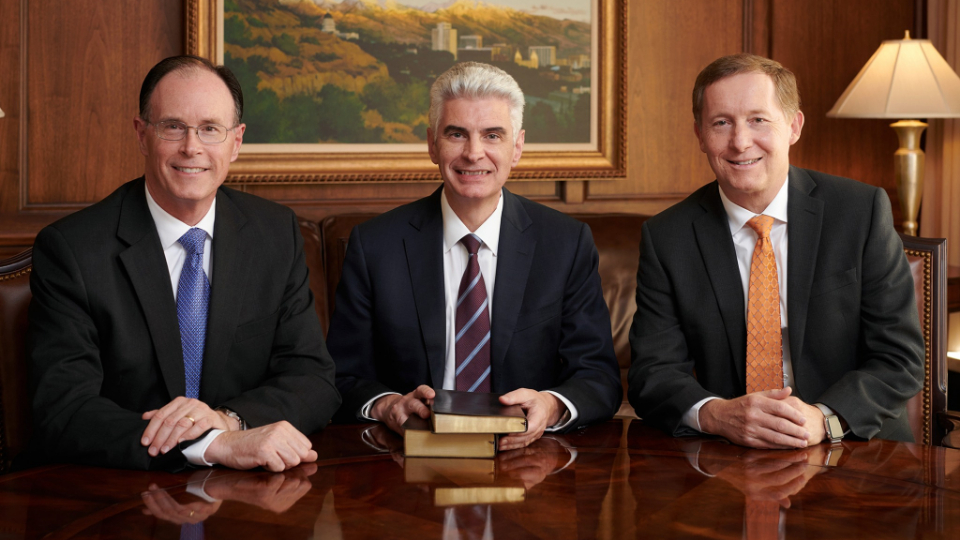
Presiding Bishopric
The Presiding Bishopric of The Church of Jesus Christ of Latter-day Saints: Bishop Gérald Caussé (Bishop), Bishop W. Christopher Waddell (first counselor) and Bishop L. Todd Budge (second counselor).2020 by Intellectual Reserve, Inc. All rights reserved.This story appears here courtesy of TheChurchNews.com. It is not for use by other media.
By Syndey Walker, Church News
The Presiding Bishopric of The Church of Jesus Christ of Latter-day Saints works under the direction of the First Presidency to oversee the temporal affairs — or physical aspects — of the Church.
This responsibility includes managing tithing and fast offerings, humanitarian aid, welfare and self-reliance programs, building and maintaining meetinghouses and temples, and producing and distributing gospel resources, such as scriptures and hymnbooks.
“Everything belongs to the Lord — it doesn’t belong to us. And so we administer these resources in His way,” Presiding Bishop Gérald Caussé said.
The February 2024 Liahona features an article by the Church News about principles that guide the Presiding Bishopric’s work and how these principles might apply to ward and stake members.
The four principles highlighted in the “Liahona” article are:
- All things are spiritual to God.
- Work in unison.
- Build self-reliance.
- Focus on people.
The online version of the article has a digital-only sidebar about how temple locations are identified.
Learn More About the Presiding Bishopric
The Church News published an Inside Church Headquarters series in 2022 about the Presiding Bishopric and the Church’s temporal affairs. The series includes the following articles and videos:
- What is the Presiding Bishopric? What do they do?
- The location, design and construction of Latter-day Saint temples
- Video: Why the Presiding Bishopric calls temple-building ‘a miracle’
- A glimpse into the Church’s vast humanitarian and welfare efforts
- Video: Presiding Bishopric explains how helping those in need is at ‘the heart of the gospel’
Copyright 2023 Deseret News Publishing Company.
